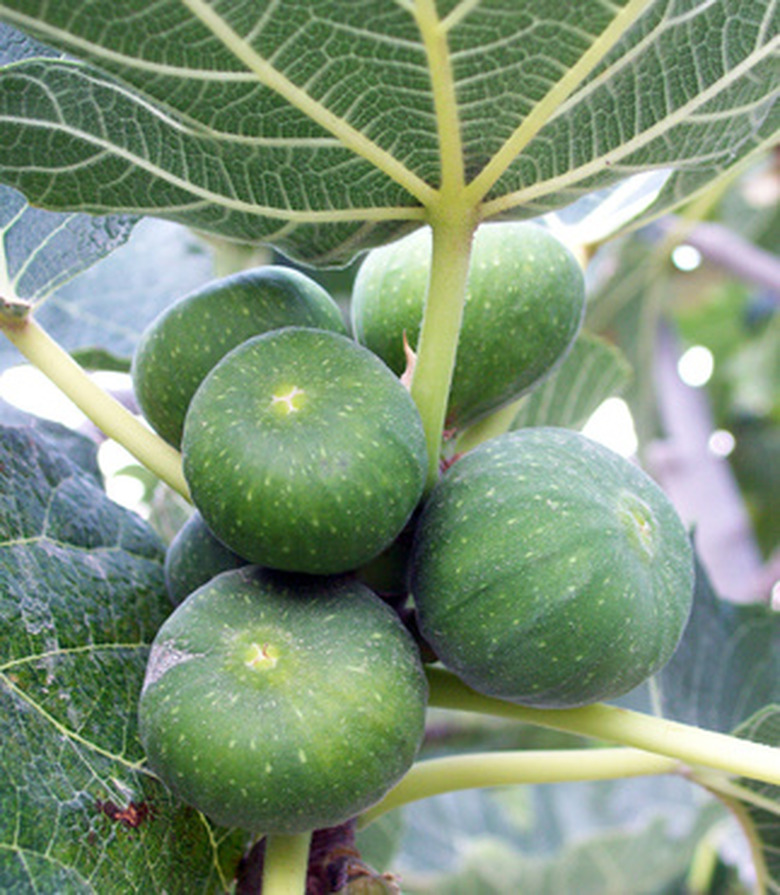How To Grow Fig Trees In Florida
Fig trees (Ficus carica), a deciduous fruit tree and a member in the family Moraceae, is an Asian and Mediterranean native. They prefer dry climates, which can lead to problems with growth and fruit production in Floridaâ??s humid conditions. Of the four varieties of figs, common figs grow best in Florida such as cultivars Brown Turkey, Celeste and Black Spanish, according to the University of Florida. Common fig cultivars do not require pollination to set fruit. Their growth in Florida has a tendency to have a bush habit rather than a tree habit due to frosts.
Step 1
Consider where you live in Florida when selecting a cultivar as some are more cold tolerant than others. Brown Turkey and Celeste are cold hardy tolerating temperatures to 15 to 20 degrees Fahrenheit according to the University of Florida.
- Fig trees (Ficus carica), a deciduous fruit tree and a member in the family Moraceae, is an Asian and Mediterranean native.
- Their growth in Florida has a tendency to have a bush habit rather than a tree habit due to frosts.
Step 2
Plant Florida bare-rooted fig trees into the ground December through February while they are dormant. Plant Florida container-grown fig trees year-round.
Step 3
Select an area in the landscape situated in full sun and large enough for the fig tree to reach maturity. Fig trees grow up to 50 feet in height and spread with 25 feet being average in Florida and their root systems grow larger than the treeâ??s mature canopy.
Step 4
Clear an area approximately 3 feet in diameter free of grasses or weeds that can impede the growth of young fig trees. Keep the area weed-free while the tree is growing in its location.
- Plant Florida bare-rooted fig trees into the ground December through February while they are dormant.
Step 5
Amend the planting site with organic matter such as compost, manure or peat. Floridaâ??s soil is sandy and prone to nematodes and amending the soil will cut down on nematode infestation in fig trees.
Step 6
Plant the fig in a hole that is two to three times wider than the container and as deep as the tree is presently growing. Place the tree into the hole and pack the soil firmly around the root ball to release remaining air pockets.
Step 7
Water the fig tree its first year with approximately 10 gallons applied three times per week. Mature fig trees have some drought-tolerance but perform best given 20 to 50 gallons of water every week.
- Amend the planting site with organic matter such as compost, manure or peat.
- Water the fig tree its first year with approximately 10 gallons applied three times per week.
Step 8
Apply an application of mulch around the planting site to help the soil retain moisture and cut down on nematode infestation. The mulch will also impede the growth of weeds and unwanted grasses.
Step 9
Fertilize young fig trees grown in Florida that are up to three years old every other month starting in March and ending in August. Apply one-half pound of a 10-10-10 blend spread underneath the treeâ??s canopy. Fertilize older trees with 2 to 4 pounds in every application.
Step 10
Treat fig trees affected with fig rust, which turns the leaves brown, with an application of a 5-5-50 Bordeaux spray. Spray the treeâ??s foliage every other week. Fig rust is the most common ailment suffered by trees planted in Florida.
- Apply an application of mulch around the planting site to help the soil retain moisture and cut down on nematode infestation.
Tip
Fig trees do not require pruning and fruit best when left to their natural habit. Severe pruning results in crop loss.
